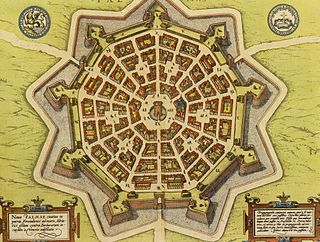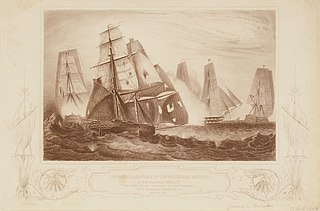Related Research Articles

Saint Lucia was inhabited by the Arawak and Kalinago Caribs before European contact in the early 16th century. It was colonized by the British and French in the 17th century and was the subject of several possession changes until 1814, when it was ceded to the British by France for the final time. In 1958, St. Lucia joined the short-lived semi-autonomous West Indies Federation. Saint Lucia was an associated state of the United Kingdom from 1967 to 1979 and then gained full independence on February 22, 1979.

The French Overseas Department of Martinique is a Caribbean island belonging to the Lesser Antilles group in the Caribbean Sea, southeast of Cuba and north of Trinidad and Tobago. It is part of the French West Indies. It lies near the Tropic of Cancer between 14° 26' and 14°53' latitude north and 63° 9' and 63° 34' longitude west. At most some 50 miles long and 22 miles wide, Martinique covers an area of 425 square miles. Its coastline is so indented that no part of the island is more than seven miles from the sea.
This is a page on the history of the island of Martinique.

Fort-de-France is a commune and the capital city of Martinique, an overseas department and region of France located in the Caribbean. It is also one of the major cities in the Caribbean.

A bastion fort or trace italienne is a fortification in a style that evolved during the early modern period of gunpowder when the cannon came to dominate the battlefield. It was first seen in the mid-fifteenth century in Italy. Some types, especially when combined with ravelins and other outworks, resembled the related star fort of the same era.

Diamond Rock is a 175-metre-high (574 ft) basalt island located south of "Grande Anse du Diamant" before arriving from the south at Fort-de-France, the main port of the Caribbean island of Martinique. The uninhabited island is about 3 kilometres (1.9 mi) from Pointe Diamant.

Lieutenant-General Robert Monckton was an officer of the British Army and colonial administrator in British North America. He had a distinguished military and political career, being second in command to General James Wolfe at the battle of Quebec and later being named the Governor of the Province of New York. Monckton is also remembered for his role in a number of other important events in the French and Indian War, most notably the capture of Fort Beauséjour in Acadia, and the island of Martinique in the West Indies, as well as for his role in the deportation of the Acadians from British controlled Nova Scotia and also from French-controlled Acadia. The city of Moncton, New Brunswick, and Fort Monckton in Port Elgin, New Brunswick, are named for him. A second more important Fort Monckton in Portsmouth, England, is also named for him. It remains an active military establishment, and currently houses the British Secret Intelligence Service (MI6) training section. Monckton sat in the British House of Commons between 1774 and 1782. Although never legally married, he raised and was survived by three sons and a daughter.

Louis Charles Antoine Desaix was a French general and military leader during the French Revolutionary Wars. According to the usage of the time, he took the name Louis Charles Antoine Desaix de Veygoux. He was considered one of the greatest generals of the Revolutionary Wars.

HMS Zebra was a 16-gun Zebra-class sloop of the Royal Navy, launched on 31 August 1780 at Gravesend. She was the second ship to bear the name. After twenty years of service, including involvement in the West Indies campaigns during the French Revolutionary Wars, she was converted into a bomb vessel in 1798. In this capacity she took part in attacks on French ports, and was present at both battles of Copenhagen. The Navy sold her in 1812.

Fort Napoléon is a fortification, located on Terre-de-Haut Island, in the Îles des Saintes, Guadeloupe. Property of the Departmental Council of Guadeloupe, it has been classified as a historical monument since the December 15, 1997.

Fort Saint Louis is a seaside fortress in Fort-de-France, Martinique. The present-day fort has evolved from earlier strongholds that were erected on the site as early as 1638, and has been known in previous incarnations as Fort Royal and Fort de la Republique. The modern-day Fort Saint Louis is both an active naval base and a listed historic site of France. There are daily tours of the fort, though the portion that is still a naval base is off-limits.

Articles related to the French overseas department of Martinique include:

The invasion of Martinique was a successful British amphibious operation against the French colony of Martinique that took place between 30 January and 24 February 1809 during the West Indies campaign of 1804–1810 of the Napoleonic Wars. Martinique, like the nearby island of Guadeloupe, was a major threat to Britain's trade in the West Indies, providing a sheltered base from which privateers and French Navy warships could raid British merchant shipping and disrupt the trade routes that maintained the economy of the United Kingdom. Both islands also provided a focus for larger-scale French operations in the region and in the autumn of 1808, following the Spanish alliance with Britain, the Admiralty decided to order a British squadron to neutralise the threat, beginning with Martinique.

Troude's expedition to the Caribbean was a naval operation by a French force under Commodore Amable-Gilles Troude during the Napoleonic Wars. The French squadron departed from Lorient in February 1809 in an attempt to reach and resupply the island colony of Martinique in the Caribbean Sea, then under invasion from a British expeditionary force. The force arrived much too late to affect the outcome of the successful invasion and took shelter from a British squadron in the Îles des Saintes, where they were blockaded by part of the British invasion fleet, led by Vice-Admiral Sir Alexander Cochrane. Two weeks after the French ships arrived, British troops invaded and captured the Saintes, constructing mortar batteries to bombard the French squadron. With his position unsustainable, Commodore Troude decided to break out.

The Battle of Martinique was a successful British invasion of the French colony of Martinique in the West Indies during the French Revolutionary Wars. They continued to occupy the island until 1802, when the Treaty of Amiens restored it to French control.

The invasion of Martinique in 1674 was an unsuccessful attempt by the Dutch Republic to conquer the Caribbean island of Martinique from France. In spite of overwhelming Dutch superiority in men and ships, the French won a decisive and unexpected victory.
Charles de Courbon, comte de Blénac was a French colonial administration who served as governor general of the French Antilles during the 17th century. He was an experienced soldier and fought for the king during the Fronde before becoming a naval officer in the French Navy. Towards the end of the Franco-Dutch War he led the land forces that captured Tobago from the Dutch before taking command of the French Antilles. During the Nine Years' War he was active in the struggle with the English and Dutch in the Windward Islands. He captured Sint Eustatius and Saint Kitts, and defended Martinique against a large English expedition in 1693.
Marc-Hyacinthe de Rosmadec was a French naval officer who was appointed governor general of the French Antilles but died before taking office.

Sabine Andrivon-Milton, is a French historian specialising in the military history of Martinique, a teacher, author and board game designer.
References
This article needs additional citations for verification .(August 2011) |
- ↑ Laurence Verrand (2004) Fortifications Militaires de Martinique, 1635–1845, Journal of Caribbean Archeology, Special Publication #1
- 1 2 William James (1837) Naval History of Great Britain (Richard Bentley; New Burlington), Vol. 5, 1808–1811, pp. 206–209.
- ↑ "Les forts". www.reve-lemanique.ch. Archived from the original on 2008-10-07. Retrieved 2008-12-10. Google translation
- ↑ "Les forts". www.reve-lemanique.ch. Archived from the original on 2008-10-08. Retrieved 2008-12-10. (in French) ( Google translation